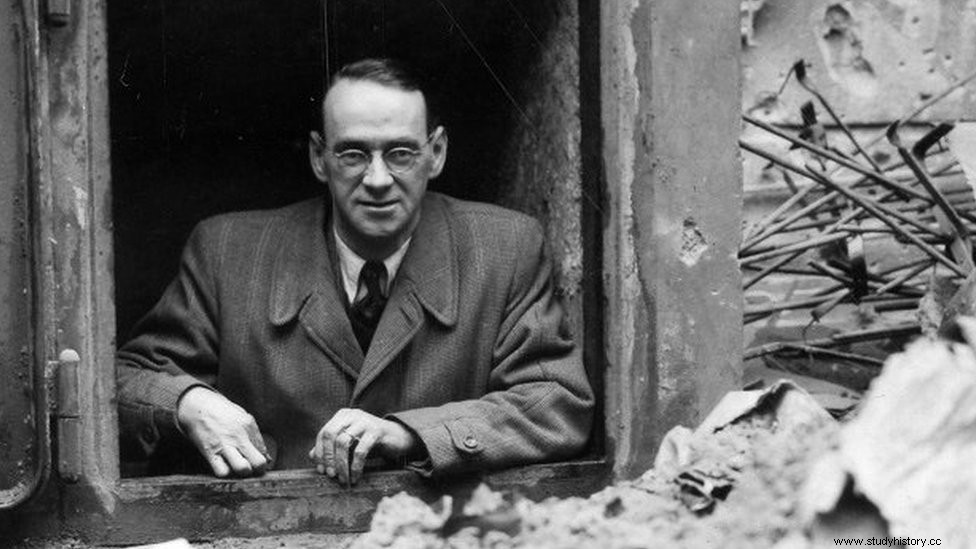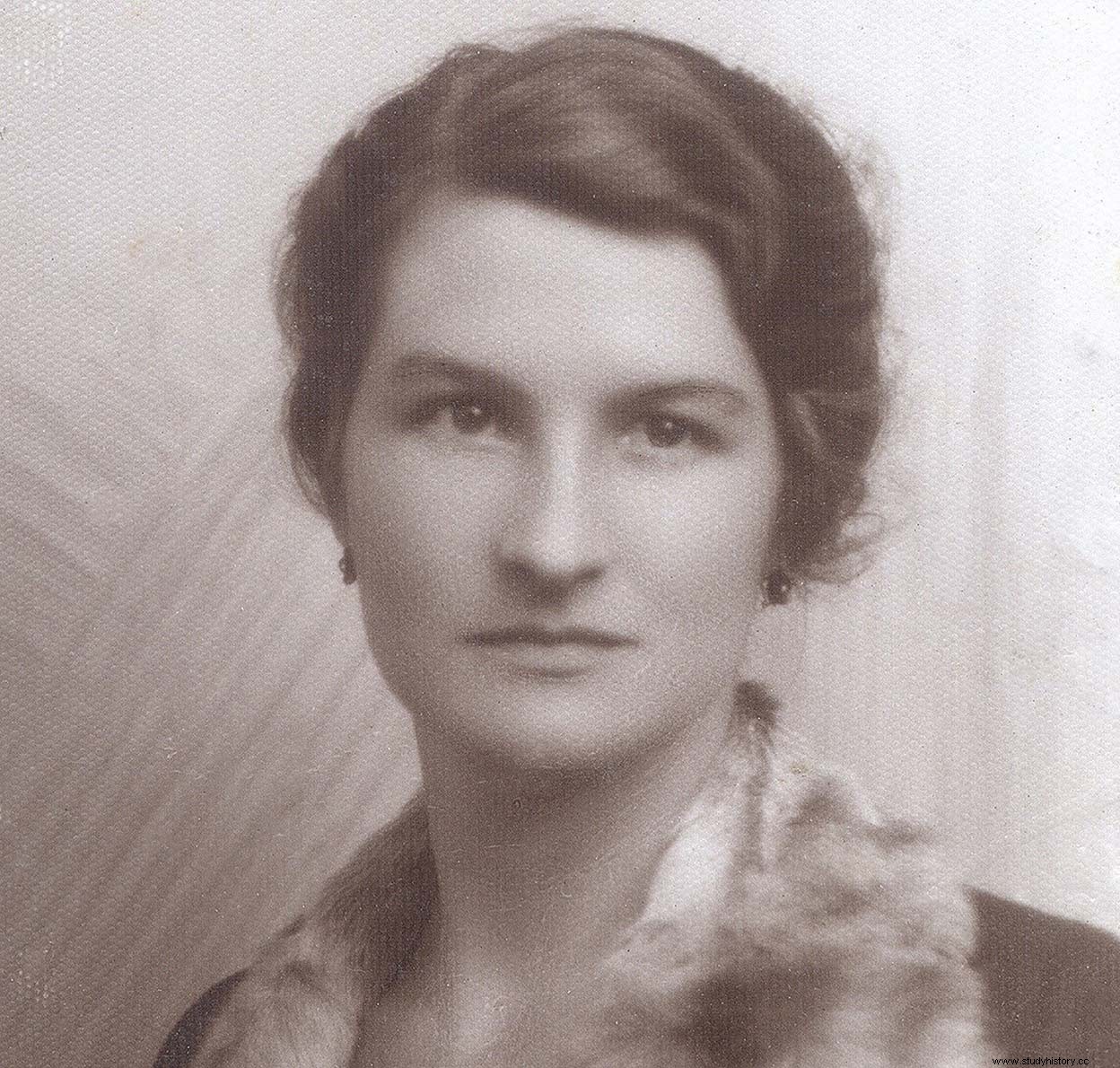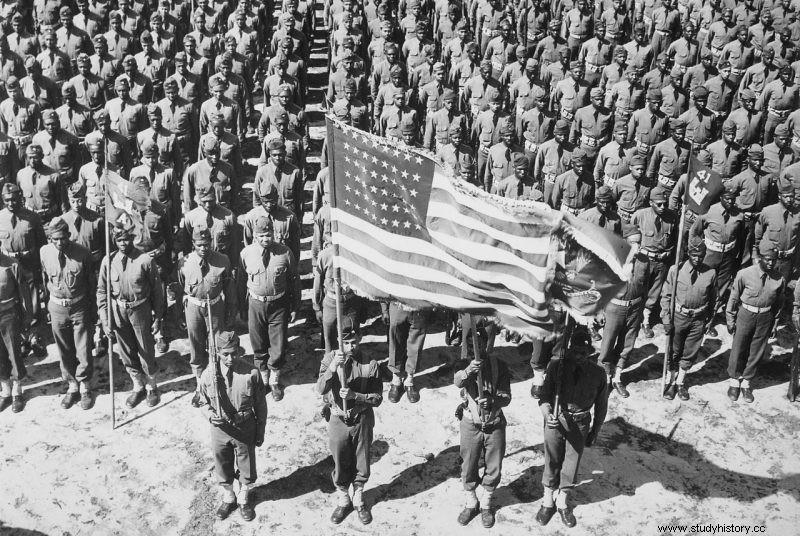Today we remember Allied soldiers as heroes of World War II (XNUMX. World War). What many need to remember are the unsung heroes of World War II who were not soldiers.
One of the most famous heroes was a German industrialist and a member of the Nazi party, not a soldier. His name was Oskar Schindler (April 28, 1908 - October 9, 1974).
He employed 1,200 Jews in his enamel and ammunition factories in occupied Poland and the Protectorate of Bohemia and Moravia.
During the Holocaust, Schindler persuaded Nazi officials to allow workers to be transferred to the Plaszów labor camp, saving them from death camps. In 1944, the Nazis placed Jews near Plaszów in Auschwitz. Schindler bribed officials to keep their workers and set up factories in a safer location in German-occupied Czechoslovakia.
By the end of the war, he had saved 1,200 Jewish lives
In 1962, Yad Vashem (Israel's official Holocaust memorial agency) declared Oskar Schindler a righteous pagan.
Like Schindler, the heroes mentioned below fought against the Nazis and saved Jewish lives, some with weapons and some without. They were not part of any army in their respective countries.
Carl Lutz, the Swiss diplomat

Stationed in Hungary, Carl Lutz (March 30, 1895 - February 12, 1975) led a diplomatic rescue operation that rescued tens of thousands of Jews from death camps, the largest diplomatic rescue of World War II.
Protection letter
In 1942, Lutz was a Swiss Deputy Adviser in Budapest, Hungary.
In March 1944, Germany invaded Hungary. It called on the country to take part in the "final solution". They wanted all Hungarian Jews deported to Auschwitz.
Hundreds of Jews crowded daily in front of the Swiss legation. Lutz, appalled by these actions, did everything he could to save the Hungarian Jews.
His first attempt to appeal to the Hungarian government to stop the deportation failed. He then sought an alternative.
Lutz issued tens of thousands of Schutzbriefs (Swiss letters of protection) to Hungarian Jews. The Nazi officials reluctantly acknowledged the documents.
The death marches
In the last months of World War II, the Nazi regime began to eliminate the entire Jewish community in German-occupied Hungary.
With nearly 8,000 certificates received from Britain for immigration to Palestine, Lutz was allowed to issue these letters of protection to 8,000 Hungarian Jews. This plan came with a twist.
Lutz put 8th century Jews as families, not individuals. As a result, he and his staff issued tens of thousands of additional letters of protection.
In addition, he rented 76 buildings in Budapest as safe houses. With his wife, Gertrude, the Hungarian Jews fed and received proper medical treatment.
The most famous of the buildings was the Glass House, an old industrial building that housed and protected 3,000 Jews.
During the death marches (November 10-22, 1944), Lutz and Gertrude followed the Jews, pulling many out of the march and producing documents declaring the Hungarian Jews under Swiss protection.
In December 1944, all diplomatic and consular efforts left Budapest, except for Sweden. Lutz remained in Budapest and continued his efforts until the country's liberation in 1945.
The Aftermath
Nearly 124,000 Hungarian Jews survived the end of World War II. Tens of thousands of them owe their lives to Carl Lutz.
Until recently, the Jewish people and the world forgot his name.
In the 1960s, Yad Vashem and the State of Israel honored him.
In 1963, Haifa, Israel named a street after Carl Lutz, and later, his hometown and the Swiss government. He was the first Swiss to be recognized as a righteous man among the nations in 1964.
During the March of the Living in 2013, 20,000 people took part in honoring Lutz's deeds outside the Glass House, now a historical monument.
Carl Lutz, instead of firepower and violence, used his diplomatic expertise and paperwork to save the Hungarian Jews.
Freddie and Truus Oversteegen and Hannie Schaft

A single mother from the working class raised two daughters:Freddie Oversteegen (September 6, 1925 - September 5, 2018) and her eldest sister, Truus (August 29, 1923 - June 18, 2016), in Haarlem, a city outside Amsterdam.
The matriarch, who considered herself a communist, taught her daughters the importance of fighting injustice. With Europe on the brink of war in 1939, she brought Jewish refugees into their homes.
From their mother, the sisters learned that if you are willing to help someone, you must sacrifice.
When the Nazis invaded the Netherlands in 1939, the sisters joined their mother in distributing anti-Nazi newspapers and pamphlets for the resistance. This was a dangerous act. If they were taken by the Nazis or the Dutch police, they would be killed.
But with the girls' young appearance, the police were less likely to suspect them of working for the resistance.
Haarlem resistance group
In 1941, a leader of the Haarlem resistance group visited the Oversteegen House. He asked the matriarch if he could recruit her daughters.
Her mother and daughters, Freddie, 14, and Truus, 16, agreed. It was later the commander told them that they would learn to sabotage bridges and railways and shoot Nazis. Although this shocked the sisters, it did not deter them.
On a mission, due to her young and innocent appearance, Freddie excelled by following a goal and keeping an eye on a mission. As for Truus, her mature-looking Nazi soldiers lured into secluded areas for an ambush.
The sisters never revealed how many Nazis or Dutch collaborators they killed.
Among their other tasks were to bring Jewish refugees to a new building, work at the emergency hospital in Eschede and blow up the railway line between Ijmuiden and Haarlem.
Hannie Schaft
Jannetje Johanna Schaft (16 September 1920 - 17 April 1945) soon joined the sisters.
Shaft was a former college student. She dropped out because she refused to sign a pledge of loyalty to Germany.
She and the Oversteegen sisters formed their own sabotage and assassination cell. Shaft then took on the code name, Hannie.
However, the Nazi soldiers saw her during an assassination attempt. Shaft then became a target. The Nazis referred to her as 'the girl with the red hair'.
In March 1945, German soldiers captured Schaft while carrying underground papers with a pistol on her bicycle. They tortured and interrogated her.
Three weeks before the end of the war in Europe, they executed Hannie Schaft on April 7, 1945. She was 24 years old.
The Aftermath
After the war, the Netherlands completely hailed Hannie Schaft as a citizen.
As for the Oversteegen sisters, they found their own ways of coping with their experiences during the war.
In addition to getting married, Truus created sculptures and wrote and told about his time in the resistance struggle.
Freddie married and had children. But her experience continued to cause insomnia. She remembered that after seeing a person she shot fall to the ground, she got the impulse to help him.
The Netherlands failed to recognize their achievements and branded the sisters as communists instead.
In 2014, they finally received recognition for their service to their country by receiving the Mobilisatie-Oorlogskruis the War Mobilization Cross.
Truus Menger-Oversteegen died on June 18, 2016, at the age of 92.
Freddie Nanda Dekker-Oversteegen died on September 5, 2018, a day before she turned 93 rd birthday.
In honor of Hannie Schaft, in 1996, Freddie and Truus started the National Hannie Schaft organization. Their goal is to make people of all ages aware of the consequences of extremism, fascism, racism and discrimination.
Johan van Hulst

A Christian Dutch educator, Johan van Hulst (28 January 1911 - 22 March 2018) was Vice-Rector of Reformed Teachers' Training College in Amsterdam.
In 1940, Germany invaded the Netherlands. Van Hulst turned the school into an anti-Nazi resistance center. In addition, he made it a refuge for Dutch teachers who refused to sign the oath of allegiance to Germany.
In 1942 he turned it into another type of shelter.
Hollandse Schoenberg theater
The school was located above the Hollandse Schoenberg Theater, which became a deportation center for Jews in Amsterdam.
Jewish children, separated from their parents, were placed in a kindergarten next to the school. They shared a garden.
Henriëtte Pimental (April 17, 1876 - September 17, 1943), a Jewish teacher, operated the facility. Along with Pimental was Walter Süskind (October 29, 1906 - February 29, 1944), a German Jew appointed by the Nazis to run the theater.
Van Hulst worked with Pimental to save the children in kindergarten. He and his colleagues planned to smuggle the babies and children out of town.
Operation Relocation
Pimental gave the kids over the stern to the teachers. They kept them hidden in the classrooms.
Süskind investigated potential adoptive families. He focused on the physical descriptions of the families to make it easier for the children to fit into the families undiscovered.
When it was time to move, teachers and college students placed the children and babies in baskets and bags.
The paramedics were waiting for a tram to pass. This blocked the view of Nazi guards from the theater. The helpers cycled the children and babies, still in baskets and sacks, to the land of their adoptive families.
They lived the rest of the war in hiding.
Together, van Hulst and his team rescued 600 children.
The intoxication lasted until 1943. The kindergarten closed and Pimental was sent to Auschwitz, along with the remaining 100 children.
According to van Hulst, it was the most difficult day of his life. He had to decide which children to take, knowing that the bereaved would die.
I took 12. I later asked myself, 'Why not 13?'
- Johan van Hulst.
The Aftermath
Van Hulst was one of the thousands of resistance workers who defied the Nazi occupation of the Netherlands. He protected and hid Dutch Jews in the remaining months of World War II.
He later served in the Dutch Senate and the European Parliament.
In 1972, Yad Vashem proclaimed him just among the nations.
Until his death, 107 years old, he only regretted that he did not do more.
I was at the center of a particular activity. It's not about me. I do not want to put myself in the foreground or play resistance hero. All I really think about are the things I could not do - the few thousand children I could not save.
- Johan van Hulst.
Virginia Hall - The Limping Lady

The lame lady, or Virginia Hall (April 6, 1906 - July 8, 1982), was one of the most dangerous spies against the Nazis.
The Limp or Cuthbert
While in Turkey on a clerical mission for the US Embassy, Hall was in a serious hunting accident.
While on a hunting trip with friends, she stumbled while climbing over a wired fence, and accidentally loosened her shotgun and broke her foot.
She lost her left leg below the knee and was fitted with a wooden prosthesis, which she affectionately called 'Cuthbert'.
Years later, she applied for positions in the Foreign Service, a long-term ambition of hers. However, they informed her that she was not eligible for the positions, not because she was a woman, but because she was amputated.
It did not stop her. She was determined not to let her leg prosthesis get in the way.
She quit her job at the State Department and found herself on another path.
Vera Atkins, British spy
In 1940, Hall went to Paris as a civilian at the end of the German invasion. She drove ambulances for the French army, but fled to England when France surrendered to Nazi Germany.
During a cocktail party, she criticized Hitler angrily. This caught the attention of many, but one person led Hall to an opportunity.
That person was British spy master Vera Atkins (June 16, 1908 - June 24, 2000), who many believe is the inspiration for Sir Ian Fleming's Miss Moneypenny in his James Bond series.
Atkins handed Hall her business card and said that if she wanted to stop Hitler, call her
British Special Operations Executive (SOE)
Hall accepted the position of Winston Churchill's newly formed British SOE, a secret British organization from World War II. Around this time, Europe was heavily involved in the war.
SOE trained her extensively in undercover crafts, communication, weapons and other resistance activities.
Atkins recruits agents for SOE Hall's first-hand knowledge of the French landscape, multilingual flow and moxie impressed Atkins.
Hall was the first female resident agent in France. She falsified papers claiming she was an American reporter for the New York Post.
She sent out information about German troop movements and military posts, recruited a network of loyal resistance spies in central France, for which she provided safe houses and intelligence.
During her first stay in a convent, she persuaded nuns to help her. She became friends with a female brothel owner and received information from French prostitutes that they received from German troops.
Although they had no technical advances, spies found creative ways to convey messages. Hall sent stories to his New York editor filled with coded messages for SOE in London.
The Rise of the Limping Lady
Hall was notorious among the Nazi leaders.
Her actions caught their attention, and the Germans realized that they were looking for a lame lady, whom they called "the most dangerous of all Allied spies".
Klaus Barbie, also known as 'The Butcher of Lyon', was a notorious Gestapo officer. His forces killed and tortured thousands in France.
Barbie was looking for Hall. He ordered a WANTED poster and had a sketch of Hal over the sentence:'The enemy's most dangerous spy - we must find and destroy her!'
After the WANTED poster went up, Hall fled France. The only possible way:a 50-mile trip across the Pyrenees south to Spain.
The bitter November weather, together with the prosthetic leg in wood, made the journey painful.
When she was in Spain, Spanish soldiers arrested her because she did not have an entry stamp. Following her release six weeks later, she left for Britain.
US Office of Strategic Services (OSS)
Hall soon became restless. She felt that her struggle with the Nazis was not over.
In fear of his father, SOE Hall's request to return to France was rejected. After that, she signed up for OSS, the Central Intelligence Agency's (CIA) predecessor.
The United States had no virtual presence in France. That changed with Virginia Hall.
In 1944, a few months before the D-Day invasion of Normandy, Hall rode a British torpedo ship to France. She disguised herself as a 60-year-old peasant woman and entered the French countryside. There she organized sabotage teams.
According to OSS records, she called in airdrops as detailed freight trains and blew up four bridges, killing 150 Nazis and capturing 500 more.
The Aftermath
When the war ended, Hall received the Distinguished Service Cross, one of the highest military honors for bravery in combat. She is the only civilian woman to receive the award during World War II.
Hall continued to work for the CIA until her mandatory retirement at age 60.
Her last 15 years in the CIA were not her happiest. She enjoyed acting independently in the field during the war. Being confined to a desk was not her ideal position. In addition, she was discriminated against as a woman.
She did not encourage attention and praise. Her immediate family members and friends did not know the full extent of her mission in France.
The British, French and Americans acknowledged her contributions privately.
the conclusion

In the past, soldiers and civilians did their part to prevent injustice. It's happening now. Although they go unsung like those mentioned above, it is those who are not soldiers who fight to help the innocent.
For example, along with the soldiers in the Russia-Ukraine conflict, it is the civilians in and out of Ukraine who are helping the refugees to live safer lives.
In the fight against injustice, however, one must find the line between fighting it and avenging it.
Justice does not consist in being neutral between right and wrong, but in finding the right and maintaining it, wherever it is, against the wrong.
- Theodore Roosevelt.
